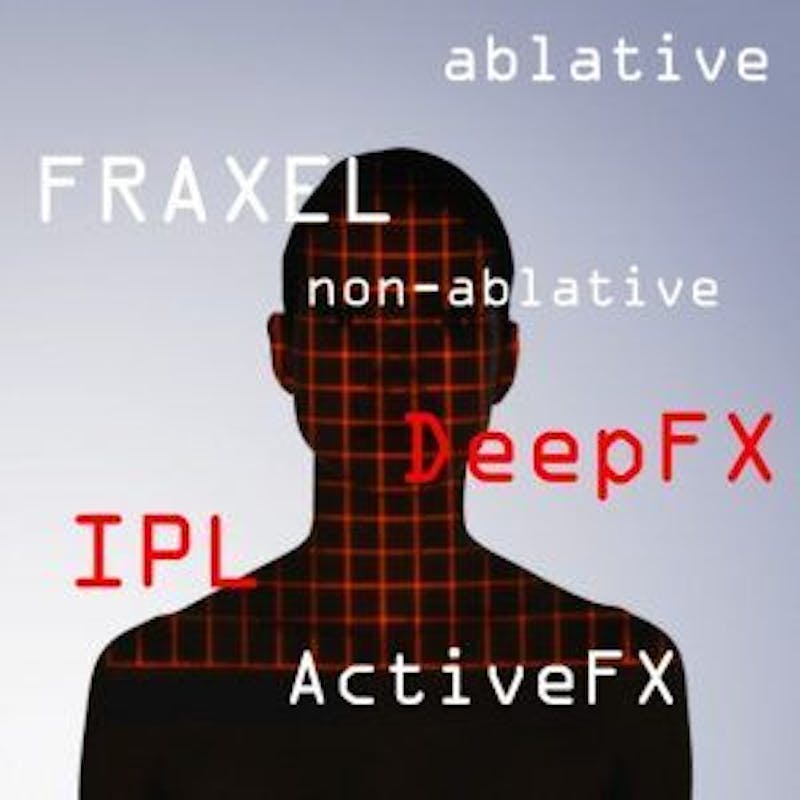
W
ith so many lasers out there, how does the lay person know which one to ask for? Ablative or non-ablative, IPL or Fraxel, KTP, WTF? What are these treatments and what do they do? The answer is best left to your Plastic Surgeon or Dermatologist to know and to guide you correctly. However, so you’re not completely in the dark, this blog will shed a little light on the subject and provide you with a basic understanding of the most common laser rejuvenation terminology.
Lasers used for the treatment of aging skin and deep wrinkles were previously ablative lasers. Ablative implies the full removal of a superficial layer of skin. In the past, most CO2 (carbon dioxide) lasers were ablative. Although the gold standard of laser rejuvenation for its aggressive repair, it was also known for the lengthy recovery it required. The patient was left oozing, swollen and bloody and relegated to at-home post procedure application of vinegar soaks and greasy creams. Removing a layer of skin also left patients with pale and ghostly pallor.
Enter the era of non-ablative lasers. Non-ablative treatments work by either resurfacing only small fractions of the skin or by bypassing the upper layer of skin completely and directing the laser beneath the surface to do its repair. IPL (Intense Pulse Light) treatments work in the latter fashion and primarily treat pigmentation issues. Wrinkle repair and skin tightening are achieved with fractional CO2 lasers.
and FX are two members of the new generation of non-ablative fractional laser treatments. Both resurface the skin similar to the way a grass lawn is aerated for fertilizer. The laser light ablates microscopic areas of skin leaving healthy bridges of skin between which make healing much quicker. Fraxel resurfacing usually requires multiple sessions in order to treat the entire skin surface. FX laser (Lumenis, Inc.) incorporates two treatment modalities; ActiveFX which targets the upper layer of skin in broader microscopic sections for pigmentation and fine line repair, and the DeepFX which targets deep dermal layers in long, thin columns for the repair of deep wrinkles and scars. Broken capillaries and cherry angiomas on the face require a different type of laser. A thin pencil fine laser is utilized to precisely target the vein or lesion. The laser generates an intense beam of laser light which destroys the trapped blood with intense heat. The KTP or Iriderm Laser is an example of this type of laser.
There is a multitude of lasers on the market and lasers with different treatment heads to address different conditions. From hair removal to wrinkle repair, it’s easy to feel you’re in the dark with so many laser options. A basic understanding of the laser language is good to have, but let your treatment professional light the way to the laser you really need.
Changes Plastic Surgery & Spa uses laser systems from Cutera and Lumenis, Inc. Contact us for a consultation and treatment recommendations.

